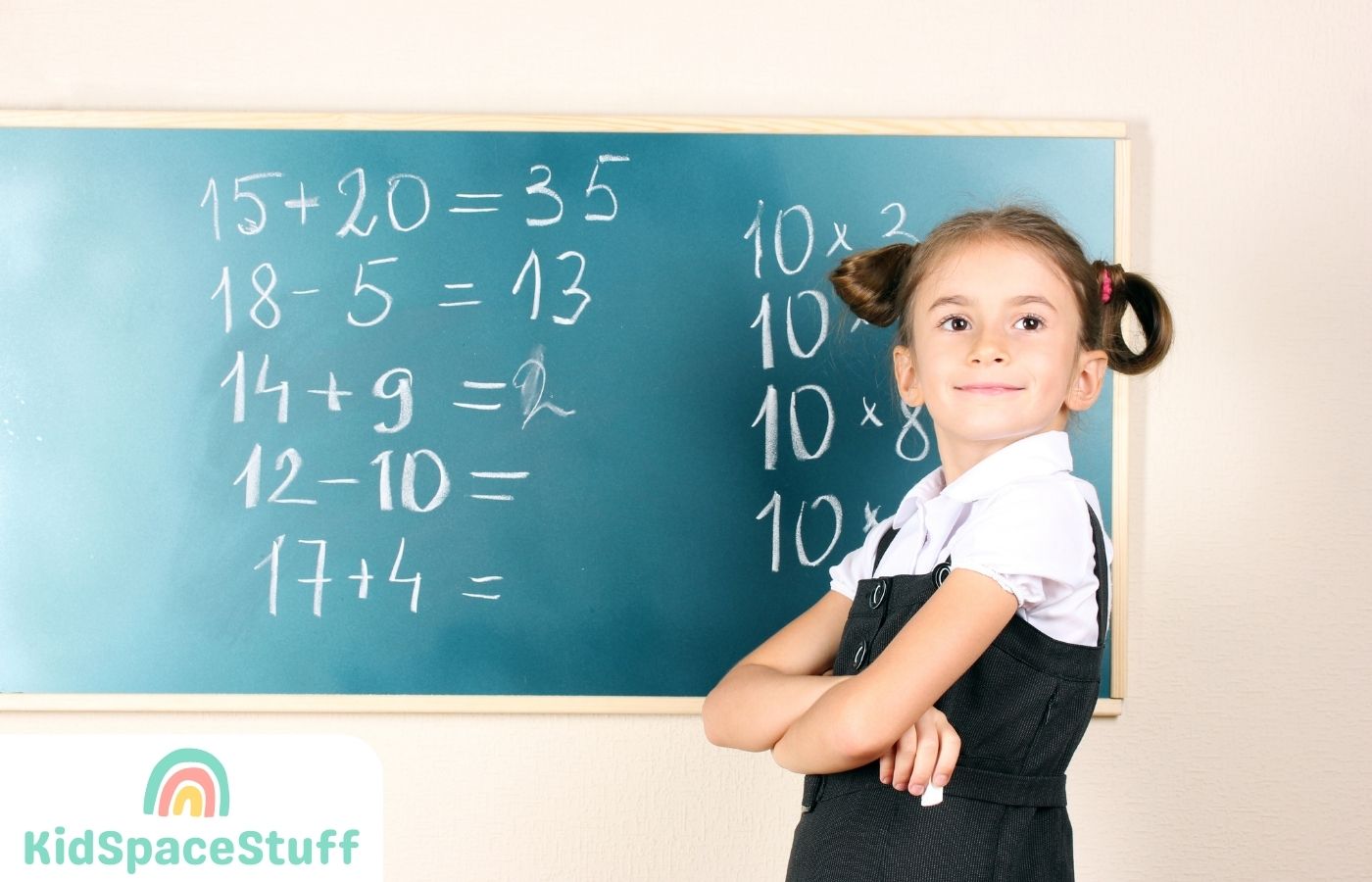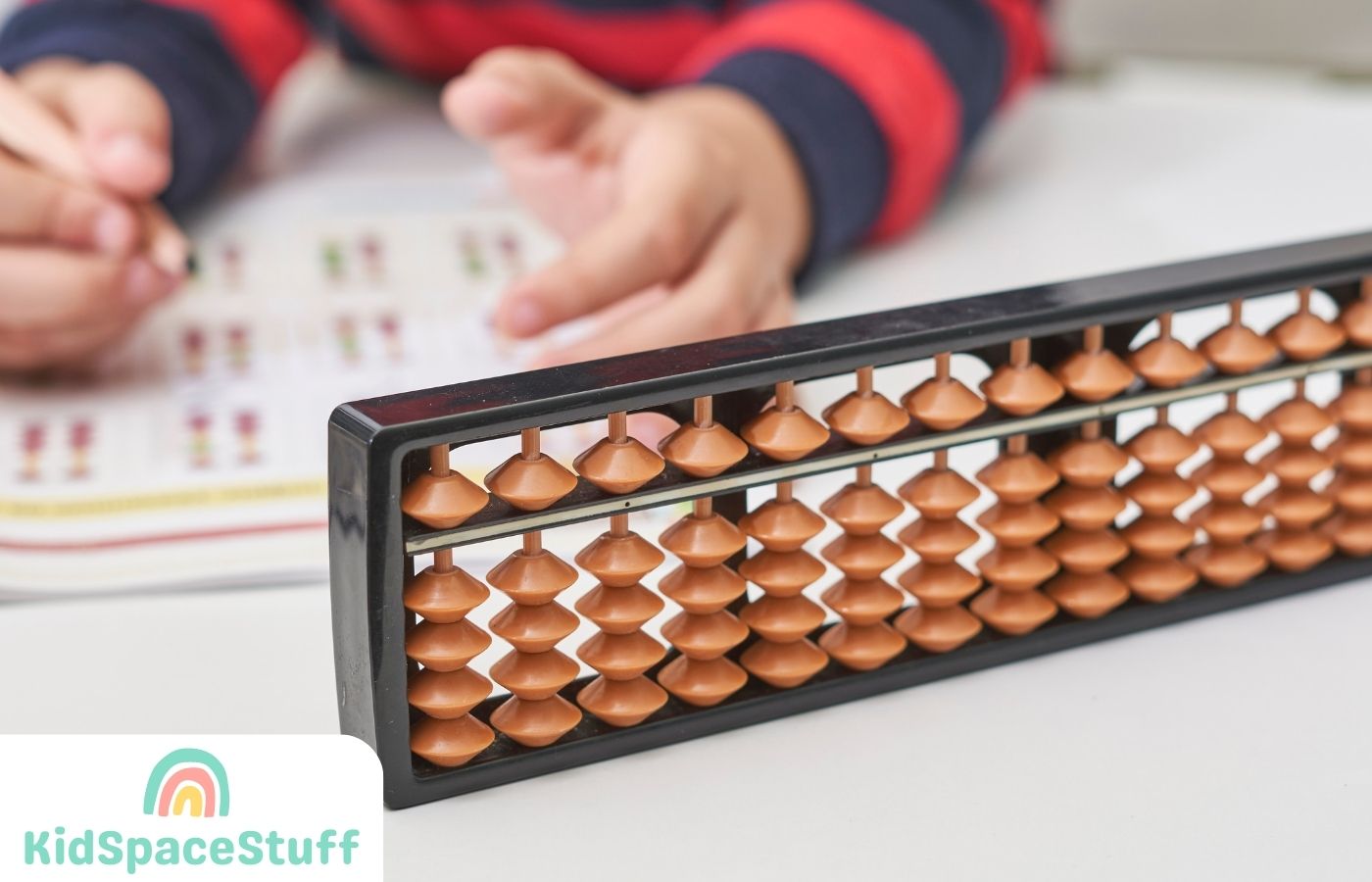As a mother of several children, I’ve taken part in many different learning journeys. The trip into the world of math is an essential one that every child must embark on.
Subtraction, one of the major milestones in this voyage, has piqued my interest, and I’ve spent a considerable amount of time researching, observing, and even teaching my children about it.
Here’s an insight into when children learn subtraction from my mom’s perspective.
Key Takeaways:
- Kids can start learning subtraction as early as age 4 or 5, and it can be introduced through counting games.
- Word problems can also be used to introduce subtraction to kids and help them understand its concept.
- Teaching strategies for subtraction include using number lines, subtraction games, and hands-on activities.
The Start of the Subtraction Journey

Looking at my own children, I’ve noticed that subtraction concepts start being introduced as early as the age of 4 or 5. We all know that children’s cognitive development can differ greatly, and the timeline can change based on factors such as the child’s learning environment and their individual pace. Yet, many kids start dipping their toes in subtraction around this age.
Some kids might start learning subtraction during their preschool years, while others may encounter the concept upon entering elementary school. Just like their first steps or their first words, the age at which children learn subtraction can vary.
The Impact of Various Factors on Learning Subtraction
A mother’s intuition tells me it’s more than just age that determines when a child will grasp subtraction. I’ve observed that formal instruction in math and exposure to real-life situations that employ subtraction significantly enhance my children’s understanding of the concept.
While playing with my little ones, dividing their toys among themselves, or sharing cookies, I’ve seen them grasp the idea of ‘taking away,’ which is essentially subtraction. These scenarios showcase how real-world interactions boost their comprehension.
The Importance of Subtraction in a Child’s Mathematical Journey
As my children grew, I saw that subtraction isn’t a stand-alone concept. It’s a fundamental part of a much larger mathematical universe. Subtraction, together with addition, forms a solid foundation that children can build upon as they delve deeper into more complex math concepts.
Knowing when children typically learn subtraction and understanding how it fits into their broader mathematical development has helped me support my children’s math growth more effectively.
Fun with Counting Games: Introducing Subtraction
Remember how I said that my children began learning subtraction around the ages of 4 or 5? One effective way I introduced the concept was by involving it in their counting games. It’s fascinating to see how an understanding of subtraction naturally emerges when kids physically remove items from a group.
Counting games are not just fun; they help kids understand the concept of subtraction, strengthen their problem-solving skills, and enhance logical thinking. Using objects that the kids are familiar with, such as their favorite toys, can make these games even more engaging.
Word Problems: The Story of Subtraction
In my house, storytime is a treat, and math stories are no exception. I’ve found that word problems are an excellent way to introduce children to subtraction in an engaging manner. Through word problems, my children can apply subtraction concepts to real-life situations, and this helps them develop their problem-solving skills.
How I Teach Subtraction to My Kids
Having seen my children’s eyes light up with understanding, I can’t stress enough the importance of using effective methods for teaching subtraction. It’s about making it engaging and exciting for the little ones. Through various teaching strategies, number lines, and subtraction games, I’ve seen my children move from confusion to confidence.
Teaching Strategies that Work
I started teaching subtraction as early as age 4 or 5 using various strategies. Counting games were a significant part of this process. By using hands-on activities like blocks and counters, my kids were able to visually and physically comprehend the concept of ‘taking away.’ Visual aids like number lines made it easier for them to visualize the process of subtractionGames that involve problem-solving also played an essential part in the learning process. By using word problems, my children were able to understand how subtraction is used in everyday life, like sharing toys or counting how many cookies were left after their siblings had some.
Repetition is key in mastering subtraction. We used flashcards and dice games to help with memorization. The use of these interactive tools has helped engage my children and develop their skills.
Number Lines and Subtraction Games: A Winning Combination
One of my favorite strategies when teaching my children subtraction is using number lines and subtraction games. They provide a visual representation of the subtraction process, and they are a fantastic way to make learning fun.
Introducing number lines was a vital step in the learning process. We began by moving backwards from a given number to subtract. To help visualize subtraction, we used counters or blocks, subtracting a specific quantity and counting backwards as we went along.
Real-life examples, like counting backward steps while walking, helped my children connect subtraction to everyday situations, making it easier for them to understand this abstract concept.
Making Learning Hands-On: The Magic of Manipulatives
Introducing subtraction doesn’t have to be boring! I found that manipulatives, such as blocks or counters, offer a fantastic way to make learning subtraction fun and engaging for children. By physically removing objects from a group, children get a concrete understanding of subtraction.
Problem-solving tasks that involve subtraction offer kids an opportunity to apply their skills in a meaningful way. I often ask my kids questions like, “If you have five apples and you eat two, how many do you have left?” These tasks reinforce subtraction skills while connecting them to real-world situations.
Online games and interactive apps also play a role in teaching subtraction. Combining these with physical manipulatives creates an engaging learning environment that promotes mathematical thinking.
Resources for Teaching Subtraction: A Mom’s Toolbox
As a mother, I’m always looking for strategies and resources to make teaching more effective. Interactive tools like flashcards, dice games, and lesson packages have been a huge help in teaching subtraction to my children, just like multiplication and division.
Flashcards and Dice Games: Practice Makes Perfect
Flashcards and dice games, when it comes to teaching subtraction, are not just practical tools—they’re a mainstay. The beauty of these interactive activities lies in their simplicity and adaptability. Flashcards, for instance, can be used in a variety of ways, either to drill basic subtraction facts or to solve more complex problems.
When I use flashcards with my children, I often start with the basics, presenting cards that display simple problems like “5 – 2 = ?”. Over time, as they become more comfortable with these simpler problems, we slowly work our way up to more challenging subtraction tasks. The goal is to gradually expand their skills while building confidence and speed in their calculations.
Dice games, on the other hand, add an element of unpredictability and fun that children love. A simple subtraction dice game might involve rolling two dice, subtracting the smaller number from the larger one, and keeping a running tally of the results. This type of game makes subtraction practice feel less like work and more like play, which keeps children engaged and eager to learn.
Lesson Packages: A Guided Approach to Teaching Subtraction
Lesson packages for teaching subtraction can be transformative. These resources, meticulously developed by education professionals, align with learning standards and provide specific instructions, making the process of teaching subtraction more efficient and effective.
These packages typically contain a wealth of resources. Worksheets and workbooks offer a variety of subtraction problems for children to practice, allowing them to gradually progress from simpler to more complex tasks. These exercises often involve a range of problem types, from straightforward numerical subtraction to word problems that require more advanced comprehension and reasoning skills.
Online activities included in these packages can be interactive and game-like, making learning exciting and engaging. These might involve virtual manipulatives or animated subtraction scenarios that draw children in and motivate them to keep practicing.
Importantly, these lesson packages should be tailored to each child’s unique learning style. Some children may flourish with tactile experiences provided by physical manipulatives, while others might thrive on digital games that offer colorful graphics and immediate feedback. By observing your child and adjusting your approach based on their preferences and progress, you can maximize the benefit they get from these resources.
A Recommended Resource for Moms and Teachers Alike

For moms like myself and teachers seeking to optimize their instruction of subtraction, a wide range of resources is available. I strongly recommend resources that offer comprehensive, engaging instruction and cover all aspects of subtraction learning—practical application, repetition for memorization, real-world problem-solving, and more.
A robust resource package should include items like flashcards and dice games for hands-on practice, as well as comprehensive lesson plans that provide a systematic, step-by-step approach to teaching the concept of subtraction.
Additionally, resources that offer techniques for memorization and repetition are invaluable. The importance of mastering subtraction facts cannot be overstated—it’s a foundational skill in mathematics. These techniques, when employed consistently, help children build fluency in subtraction, which sets the stage for learning more complex mathematical concepts.
Ultimately, the goal is to make learning subtraction a rewarding journey rather than a daunting task. With the right tools and resources, we can guide our children towards mastering this essential math skill, laying the groundwork for their continued success in mathematics.
FAQs about When Do Kids Learn Subtraction
When do kids start learning subtraction?
According to the reference data, students start learning subtraction once they have a good understanding of number values and counting.
What age can younger students be introduced to subtraction?
Younger students can be introduced to the idea of subtraction as they are learning to count, sometimes as early as age 4 or 5.
How can parents help their kids understand subtraction at home?
Parents can play the Number Facts Pairs game, relate subtraction to real-life situations, use objects or drawings to visualize subtraction, and play dice games or board games to practice addition and subtraction.
What are some common teaching strategies for subtraction?
Teaching strategies for subtraction include using objects to represent numbers, physically taking away objects to demonstrate subtraction, using number lines, repetitive drills, subtraction games, and breaking down numbers based on place values.
What are some teaching strategies to avoid when teaching subtraction?
Teachers should avoid overwhelming children with excessive information and avoid teaching traditional subtraction with borrowing, as it can be confusing and hinder their understanding of place values.
What resources are available to assist with teaching subtraction to children?
Brighterly offers tutoring services to help children with subtraction and other math concepts. The book “Subtraction Facts That Stick” provides detailed lesson plans, games, and worksheets for teaching subtraction facts effectively.
Final Thoughts
In closing, having navigated the subtraction learning path with my children, I’ve discovered that tools such as flashcards, dice games, and custom-tailored lesson packages can transform this journey into an engaging adventure. By utilizing these resources, we can foster subtraction mastery in our children, thereby establishing a robust base for their future mathematical growth.
KidSpaceStuff is a site dedicated to helping parents find the best interior design, activities, and inspiration for their kids.